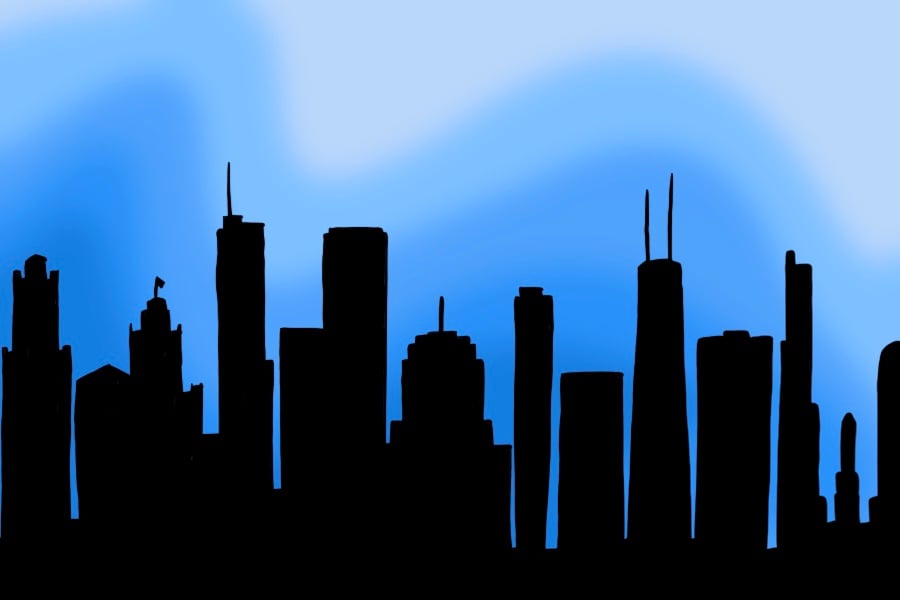Your guide to understanding and exploring the nation’s third most-populous city
Chicago is more than just “the Loop.”
August 16, 2021
During Wildcat Welcome, my Peer Adviser told me one of the biggest regrets that Northwestern seniors have is not exploring the city of Chicago more. Between a loaded schedule of classes, extracurriculars and social activities, it may seem hard to budget time to head into the nation’s third most-populous city. However, with some good time management and research, you will find that every trip into Chicago — whether to grab a bite, watch a show or volunteer — will always offer something new to experience and learn.
Whether you spent your entire life in Chicago or are an international student coming to the U.S. for the first time, The Daily has you covered on how to navigate the city — and be civically engaged with it.
City of neighborhoods
Chicago comprises 77 community areas, which contain several neighborhoods. Rogers Park is the northernmost and borders Evanston to the south. Other community areas include the vibrant LGBTQ+ Boystown, the historically Latinx and culturally rich Pilsen and the only growing Chinatown in the country.
Downtown Chicago is often referred to as “the Loop,” for the shape that the Chicago Transit Authority train makes above the streets. The regions of the city are referred to in geographical reference to the Loop — North Side, West Side and South Side. Lake Michigan borders the entire city (and Evanston) to the east.
How is it governed?
The city’s government consists of an executive and legislative branch. Lori Lightfoot has been the mayor of Chicago since May 2019, and her roles include appointing commissioners and other officials to oversee various departments.
The legislative branch is the City Council, containing 50 alderpeople, each representing one of Chicago’s wards. Alderpeople are re-elected every four years, similarly to the mayoral position.
Chicago is more than the Loop
Oftentimes, tourists and NU students alike will refer to downtown Chicago as “the Loop,” and it may be the first thought that comes to mind when people mention “Chicago.” While the Loop does house famous landmarks, such as the Willis Tower (formerly known as the Sears Tower), the Bean and the Art Institute of Chicago, it simply contains just a small fraction of the people and places of Chicago.
How do I get into Chicago?
Most students will take the CTA train — colloquially known as the “L,” or elevated train. During rush hour weekdays, the Purple Line runs directly from Evanston into the Loop; otherwise, you will have to connect to the 24-hour Red Line at Howard Station, which will then take you downtown to make connections to other lines. The Blue Line runs to Chicago O’Hare International Airport and the Orange Line runs to Midway International Airport.
To ride any CTA offering, such as bus or train, you need a Ventra card. You can either buy one or register one through the University — using a Northwestern Ventra card will allow you to ride the #201 CTA bus, which can take you to the local shopping mall in neighboring suburb Skokie, for free. Fares can be reloaded through the app or at booths at train stations.
Other common options include Ubering, taking the Metra commuter rail or the University’s Intercampus shuttle. The Intercampus has stops around Evanston, at Loyola University Chicago’s campus and in front of NU’s Feinberg School of Medicine.
How do I stay civically engaged?
It can be easy to feel disconnected from what happens in Chicago — and even Evanston — when the quarter picks up and it gets chillingly cold outside, but there are resources available to help you stay involved in social justice initiatives. Some NU-sponsored opportunities include the Center for Civic Engagement, summer field study program Engage Chicago and a certificate program for civic engagement. Some local organizations, with focuses from underserved youth to grassroots organizing, include My Block, My Hood, My City and ONE Northside.
Email: [email protected]
Related Stories:
— Chicago: Your starter pack to living, studying and working next to the country’s third-largest city


